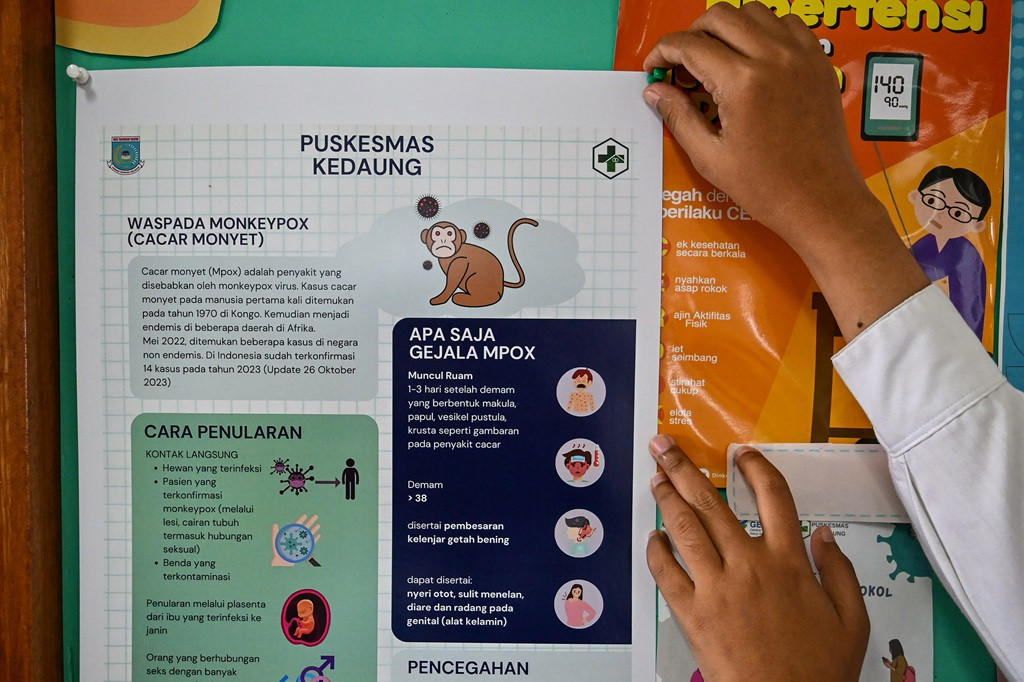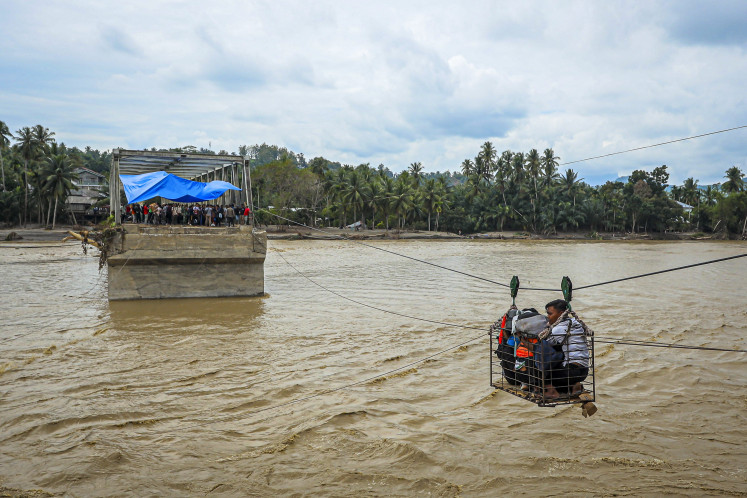Popular Reads
Top Results
Can't find what you're looking for?
View all search resultsPopular Reads
Top Results
Can't find what you're looking for?
View all search resultsMpox mitigation plan
As the country prepares for the government transition in October, our health system needs to ramp up its preparations for a potential outbreak of mpox on Indonesian soil.
Change text size
Gift Premium Articles
to Anyone
I
t has only been a year since the world was declared free from the COVID-19 pandemic. But the celebration proved to be short-lived, as we are now facing another emergency health status from monkey pox, or mpox.
While this is not the first time the World Health Organization (WHO) has declared a public health emergency for the viral disease, the situation today is much direr than the previous mpox alert last year.
Thanks to a new strain identified as clade Ib, the disease has spread farther and faster. By last week, several confirmed or suspected cases of the new mpox strain have been detected in the Philippines and Thailand, 10,000 kilometers away from the original outbreak in Central Africa.
Mpox might not be another COVID-19, according to the WHO, which also assured that it now knew better how to control the disease. But this is no excuse for us to be complacent and lower our guard on public health.
Aside from its higher level of virulence, another concern is that the new mpox strain might have higher disease severity and cause more deaths. The United States Centers for Disease Control and Prevention (CDC) noted that some outbreaks of the new variant had a mortality rate of up to 10 percent.
While a new estimate puts the median range at 3 percent, this is still higher than the 0.2 percent mortality rate recorded for the 2022 outbreak, most of which was caused by the milder, less infectious clade II strain.
The Health Ministry says it is intensifying prevention and mitigation efforts, including readying laboratories to test suspected cases and increasing the vaccine supply.
But these measures might fall short.
The ministry has only around 4,500 doses at its disposal, or enough to cover 2,250 people at risk. While this is 78 percent higher than the 495 people vaccinated last year, experts are push for more vaccine doses to inoculate hundreds of thousands of at-risk groups, such as people with HIV and comorbidities as well as the elderly.
Health authorities should also be more proactive in reaching out to these groups, rather than sitting idly by, waiting for them to come in for their jabs.
The WHO’s recent declaration of mpox as a global health emergency also raises the question as to whether we are ready for when the next plague strikes, whatever the disease may be.
This is a question of when, not if, thanks to the climate crisis, environmental degradation and high global mobility of people and goods, among other factors.
Since COVID-19, experts have cast doubt over the readiness of the country’s to health system to handle another pandemic. Worse, the government has liquidated the Eijkman Institute for Molecular Biology, the renowned research laboratory that played an important role in identifying the microscopic pathogens that have caused outbreaks in the past few years.
The government can claim that the institute still exists as part of the National Research and Innovation Agency (BRIN), but it’s not like this umbrella agency is functioning properly. Many of its researchers are too busy navigating the bureaucracy and worrying over their measly government paychecks.
The Health Ministry might also argue that we now have a newly signed implementing regulation of the Health Law as a guideline for dealing with the next pandemic, but we need swift and tangible actions to mitigate the severity of the next outbreak, as well as any fallout.
We cannot rely on the lame duck administration for this, especially since it is responsible for weakening our health institutions through the political stunt of setting up the BRIN.
All eyes are therefore on president-elect Prabowo Subianto, who is expected to move quickly to bolster our public health defense against any pathological threat. But we cannot afford to wait until mpox starts spreading locally and claims as many lives as it has in Africa.










